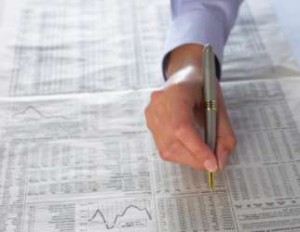


When we consider the risk in investing, we’re often thinking about volatility: that is, the sometimes dramatic movements in equity prices. But as Alan Fustey explains in his book, Risk, Financial Markets & You, there’s a big problem with equating volatility with risk.
One of the biggest shortcomings in financial models is the reliance on standard deviation (SD) as a measure of risk. SD is a measure of volatility—or more specifically, how much returns vary around the average. About two thirds of all returns will fall within one standard deviation of the average, and 95% will fall within two standard deviations. In theory, annual returns that vary by three standard deviations should happen only once in a century, while a six-SD event would occur about once in a billion years.
This idea makes more sense when you use some real-world numbers. According to Credit Suisse, from 1900 to 2011 the average annual return on equities was 8.5%, with an SD of 17.7%. That means two years out of three should see returns between –9.2% and 26.2% (the average +/- one SD). In only one year out of 20 would returns be lower than –26.9% or higher than 43.9% (the average +/- two SDs). Looking back to 1970, you would expect two such years in Canada, and that’s what we experienced: a 44.8% gain in 1979, and a –33% loss in 2008.
One in a billion?
Although SD is a backward-looking measure, it seems a reasonably reliable measure of annual market volatility. Yet as Fustey explains in his book, the probabilities don’t hold up when we look at daily returns. If the average daily return on stocks is 0.03% and the SD is 1% (a close enough estimate), then two-thirds of daily returns should be between –0.97% and 1.03%. In about 19 days out of 20, the returns should be between –1.97.% and 2.03%. A daily return that is five SDs from the average (a gain or loss of about 6%) should happen only once in 3.5 million trading days, and a six-SD event is a one-in-a-billion proposition.
But that isn’t borne out by history. Fustey presents data going back to 1927 that shows the S&P 500 has seen 19 days with losses greater than –7%, three of which came in 2008 alone. Black Monday in 1987 was a 22-standard-deviation event, which should have been as likely as throwing a dime off a tall building and having it land on its edge.
With this in mind, Fustey makes a distinction between risk and uncertainty. “Risk is what you have when you’re playing poker,” he told me in our interview. “There are a known number of outcomes with 52 cards, and the probabilities can be mathematically calculated. You can’t do that with markets. There is an infinite set of possibilities, so it is a completely different animal. Risk has the connotation that there is some kind of control there. But even with indexing, there isn’t that control. You get whatever the market gives you.”
Fustey’s takeaway message is that standard deviation can’t model uncertainty. “Anything can happen in financial markets,” he says. “So you’ve got to somehow assess the likelihood of these bizarre, extreme events, both positive and negative.” In practical terms, this means that investors may want to consider some kind of safety net to protect them against sudden, unexpected drawdowns. Next week, I’ll look at a couple of methods that index investors might use to protect their portfolios from crippling losses.
Book winners
Congratulations to readers Anthony and Cam, who were chosen as the winners of the draw for copies of Fustey’s book. Many thanks to everyone who entered.












